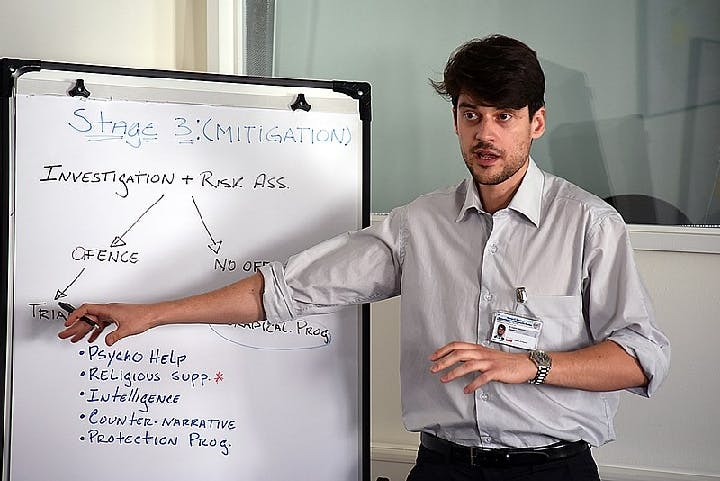Spring 2010
No Martyr Left Behind
– The Wilson Quarterly
Is "leadership decapitation" an effective strategy in combating terrorist organizations?
Removing the leaders of terrorist groups, either by assassination or arrest, is a key strategy in combating terrorism. After the killing of Abu Musab al-Zarqawi in 2006, President George W. Bush claimed that Al Qaeda had been dealt a “severe blow.” But Jenna Jordan, a doctoral candidate in political science at the University of Chicago, begs to differ.
Decapitation, as this tactic is called, is “not an effective counterterrorism strategy” and in fact can “strengthen a group’s resolve, result in retaliatory attacks, increase public sympathy for the organization, or produce more lethal attacks.”
Jordan compiled a data set of 96 organizations, such as Hamas and Germany’s 1970s-vintage Baader-Meinhof Gang, that experienced a total of 298 incidents of decapitation between 1945 and 2004. She found that as organizations grow and age, they become more resilient. For groups with fewer than 25 members, decapitation was successful 54 percent of the time in causing the group to fall apart. For groups with more than 10,000 members, it worked in just nine percent of instances. The age of a group was “highly significant” as well, with no groups that had been around for 40 years or more collapsing as the result of decapitation. Among organizations less than 10 years old, nearly a third dissolved after losing their leader.
Jordan also found that the success of decapitation varied greatly depending on what type of group was involved—religious, ideological, or separatist. Religious groups are particularly resilient, perhaps because they have “a sacred element that inspires a level of dedication not seen in other movements.” Less than five percent of religious groups fell apart after decapitation. Ideologically motivated groups, on the other hand, are more susceptible to attacks on their leaders, collapsing one-third of the time. The data on separatist organizations were inconclusive.
How leaders are taken out of action turns out to matter a great deal. Arresting the top leader is less effective than killing him, possibly because he may still be able to communicate with supporters or because remaining players rally together in an effort to free him. But it’s more effective to arrest second-tier leaders than to kill them, possibly because they provide intelligence to their captors or because there’s no martyr whose memory unites remaining members.
Overall, Jordan observes, organizations whose leaders are targeted fail less often than others. Seventy percent of those that did not experience decapitation collapsed. It’s possible that the assassination or arrest of a leader actually invigorates terrorist groups.
Of course, policymakers may be satisfied with wounding a terrorist group, even if it doesn't fall apart. But Jordan cautions against that, noting that groups that do survive may become even more lethal in the years following decapitation, as younger, more radical leaders take the helm.
* * *
The Source: "When Heads Roll: Assessing the Effectiveness of Leadership Decapitation" by Jenna Jordan, in Security Studies, October-December 2009.
Photo courtesy of Wikimedia Commons
